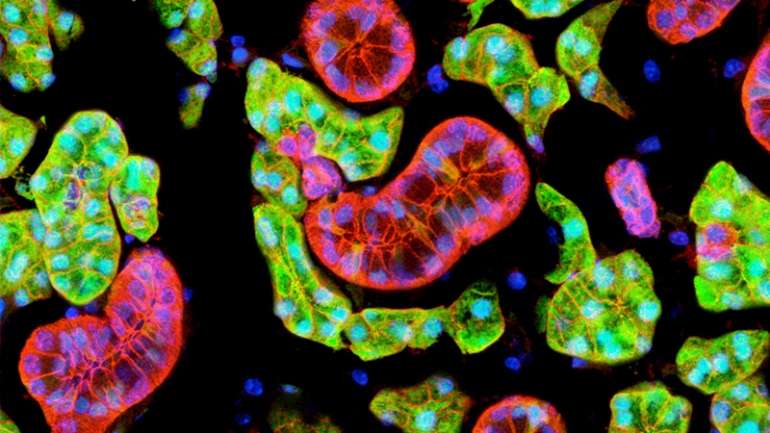Rebuilding the salivary gland after radiation

Patients who undergo radiation therapy for head and neck cancers often lose the ability to produce saliva because radiation destroys salivary glands that lie in the way of the tumor.
The damage to humans' glands is permanent, but another species has the ability to rebuild the organ within two weeks of an injury.
In experiments in mice, when radiation destroys saliva-producing structures called acini, the animals' stem cells divide and differentiate into acinar cells to rebuild the salivary gland.
Noel Cruz-Pacheco, MS, a staff research associate in UC San Francisco's Department of Cell and Tissue Biology, and his colleagues in the lab of Sarah Knox, PhD, want to know what triggers mouse salivary stem cells to repopulate acini.
To watch the repopulation process, Cruz-Pacheco inserted a fluorescent marker into the genome of salivary stem cells, visually labeling them and their progeny. This strategy, called lineage tracing, allows scientists to follow along as generations of a cellular family grow and spread across a tissue.
The resulting image shows a section of a healthy mouse salivary gland with acinar cells labeled in green. The same image has pink-labeled cells, which are ductal cells that channel saliva from the acinar cells into the mouse's mouth.
Now that they can watch gland regeneration over time, the Knox lab is deciphering the signals that regulate regeneration. They found that after radiation, nerves in the mouse salivary gland detect damage and activate specific stem cells to rebuild acini.
The Knox lab thinks that the critical difference between mice and humans is the loss of these pro-regeneration neuronal signals after radiation in humans. While human salivary stem cells exist, they aren't activated after radiation.
"Radiation destroys the communication between nerves and stem cells in human patients," Cruz-Pacheco said. "But what if we could learn from mice what signals to send?"
Cruz-Pacheco hopes that their research will one day enable the development of stem cell therapies for gland regeneration in human patients.

















